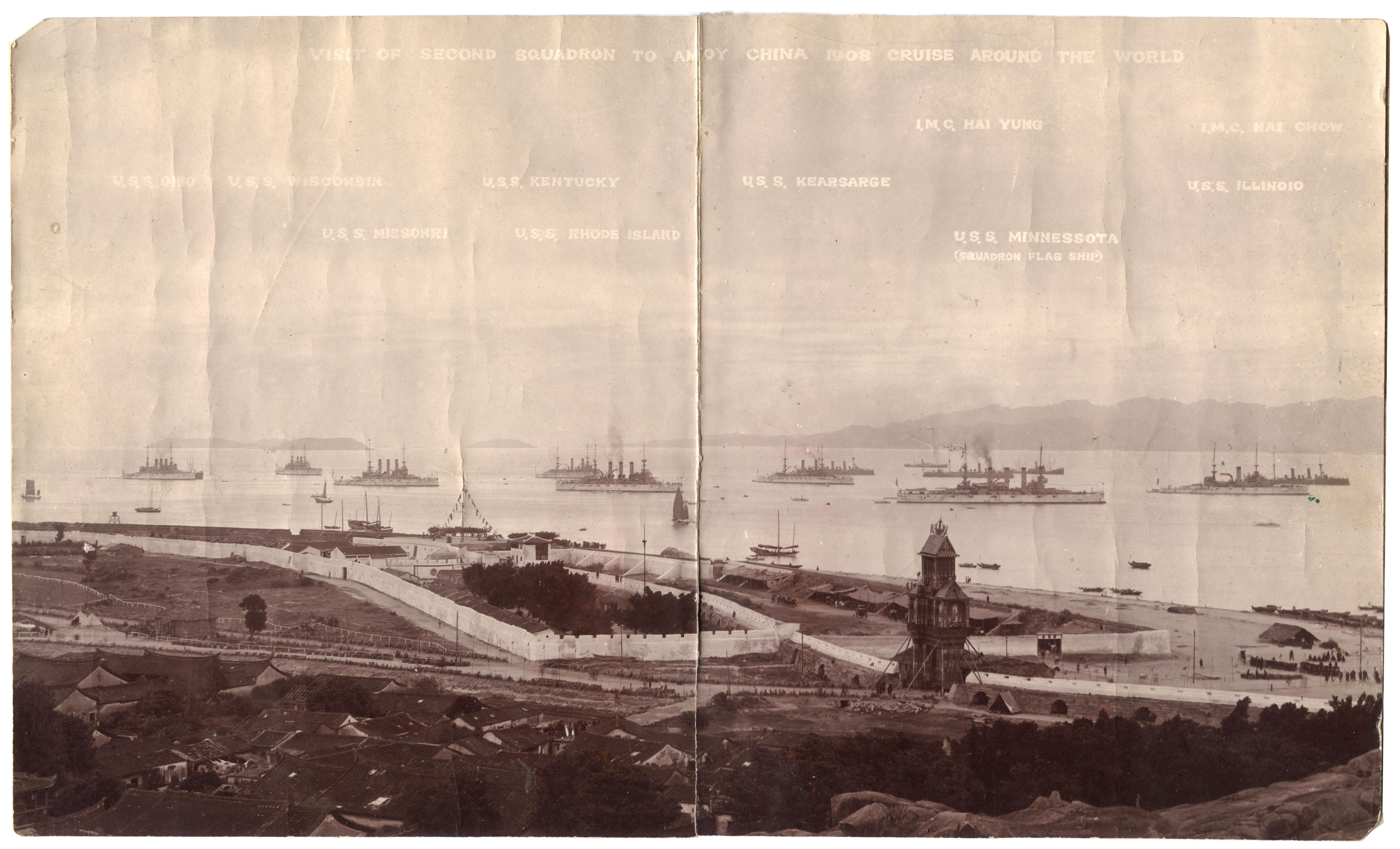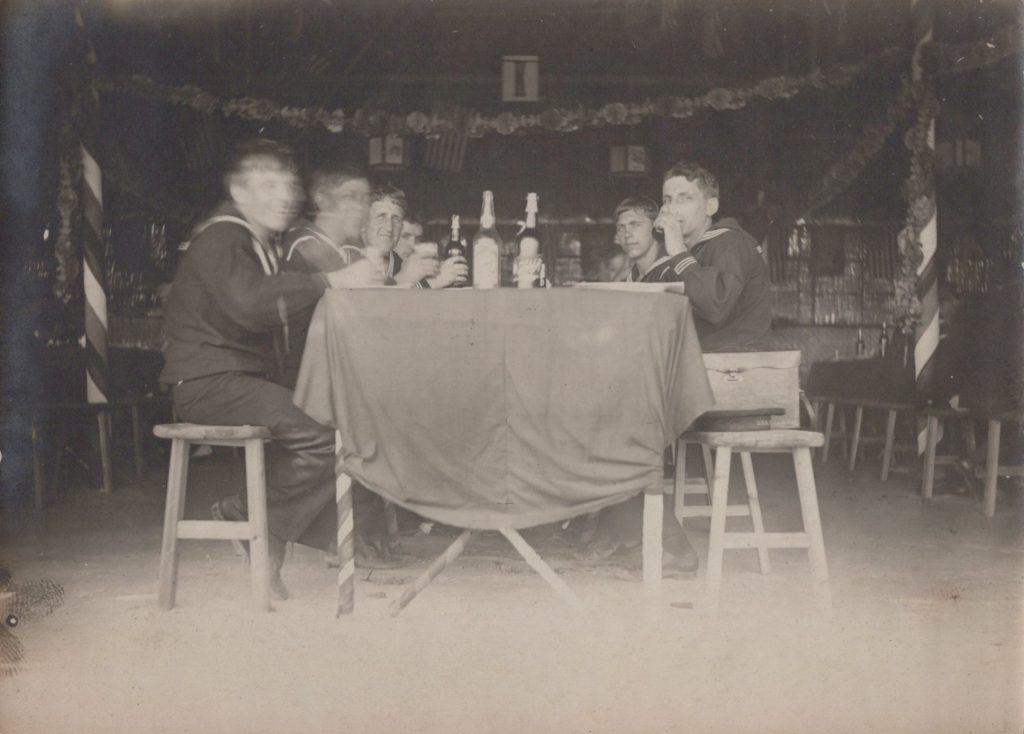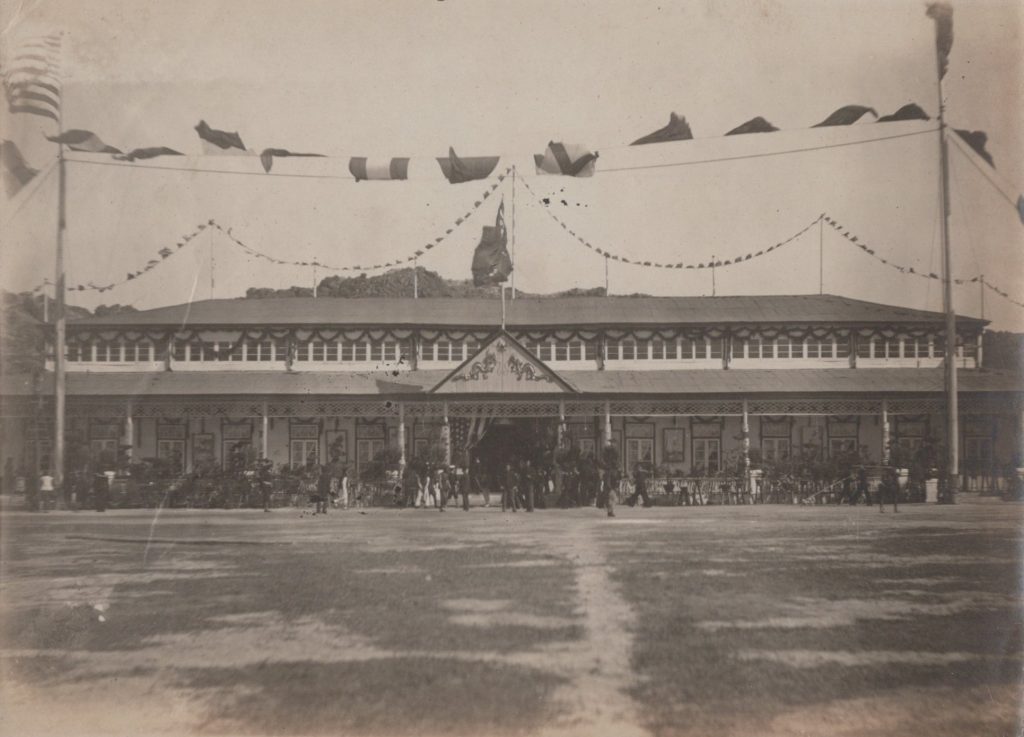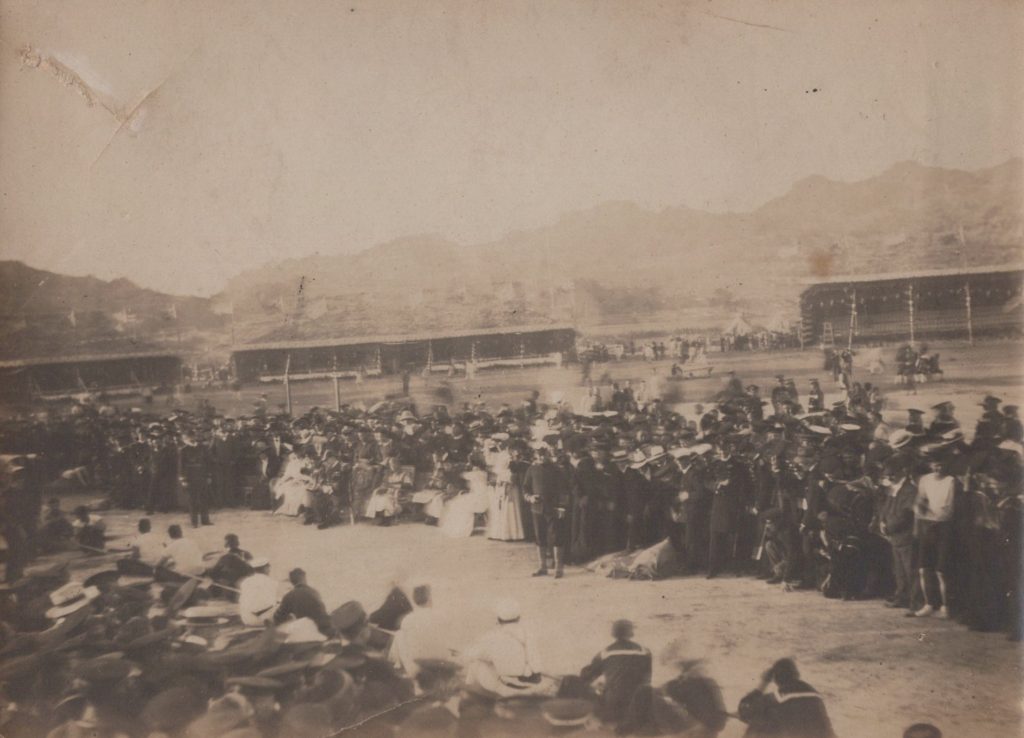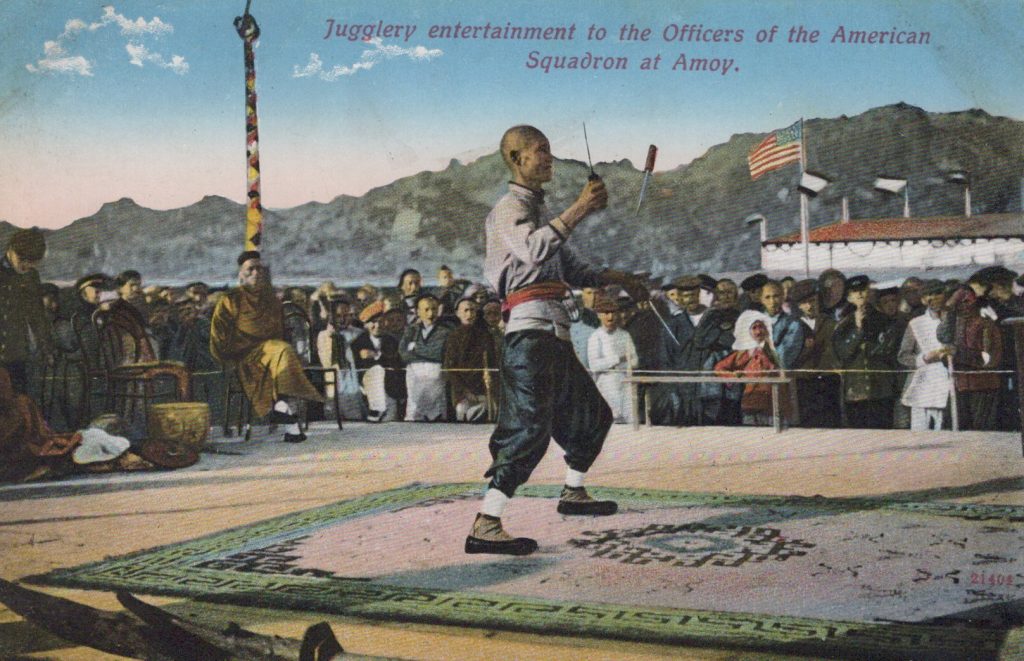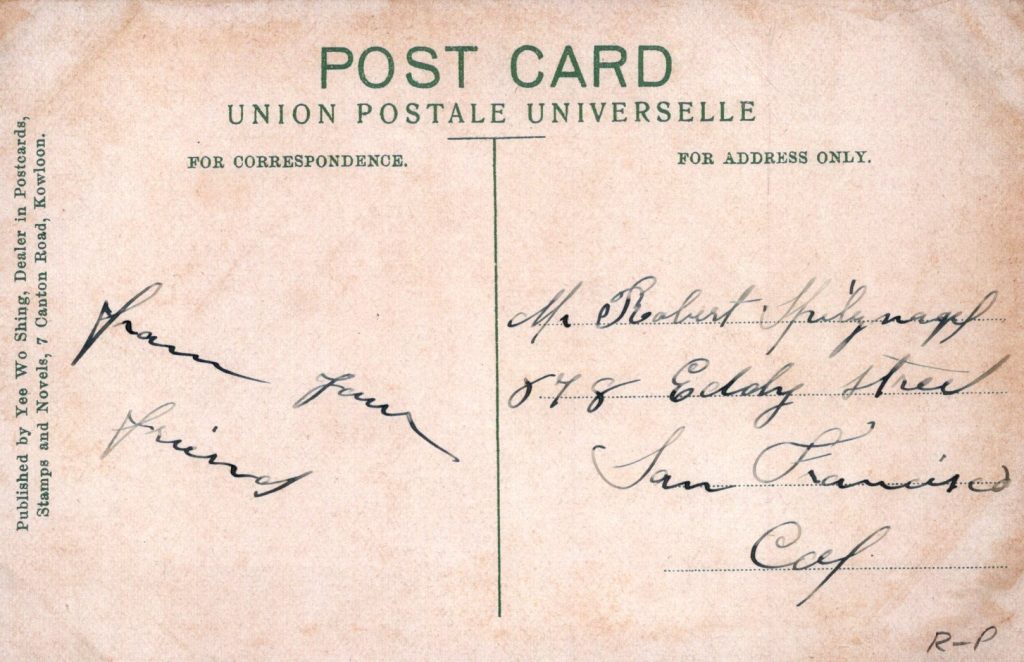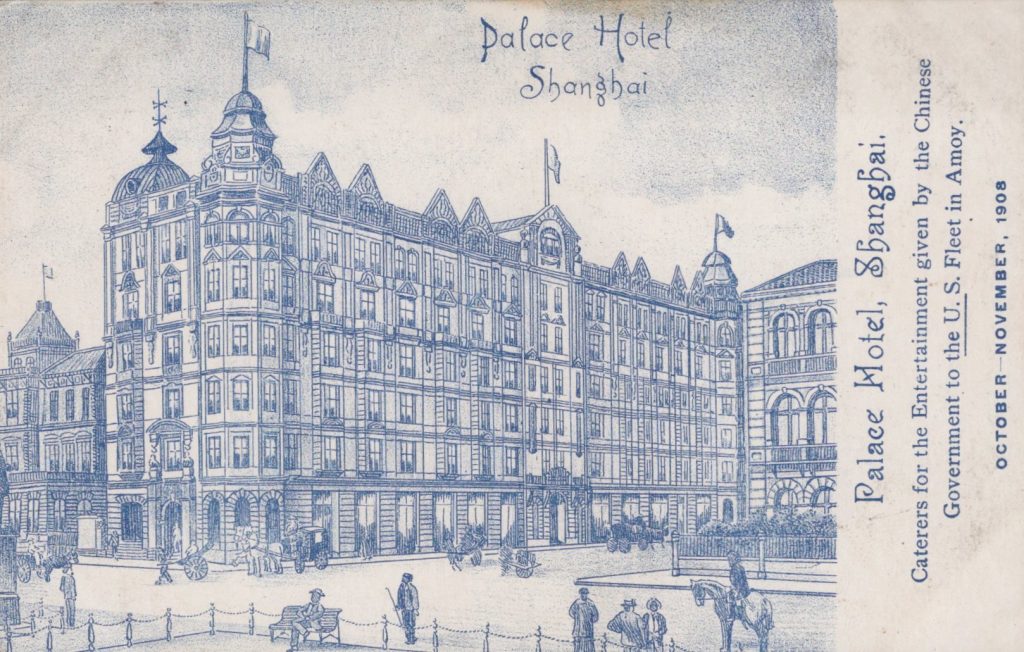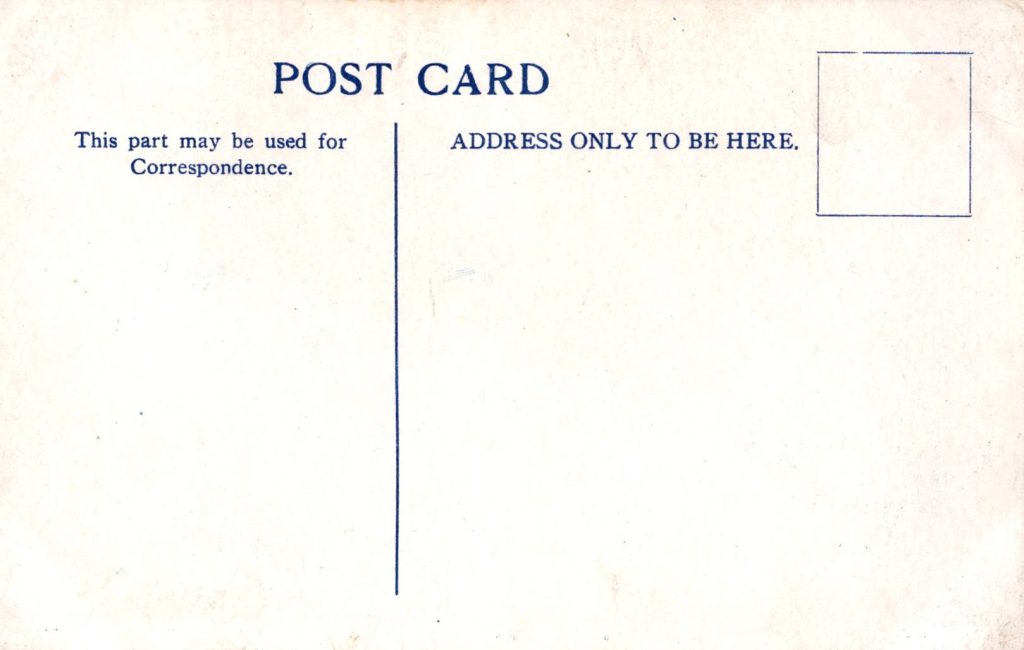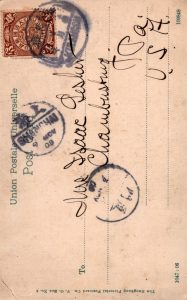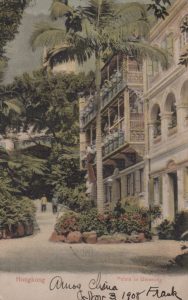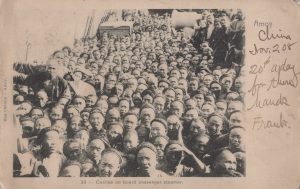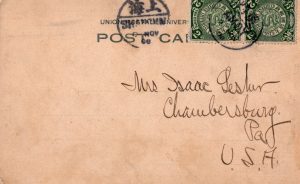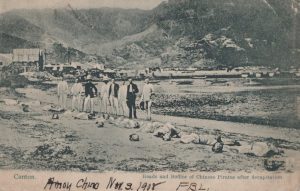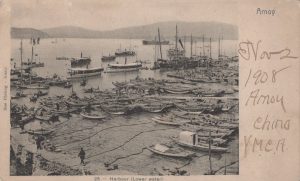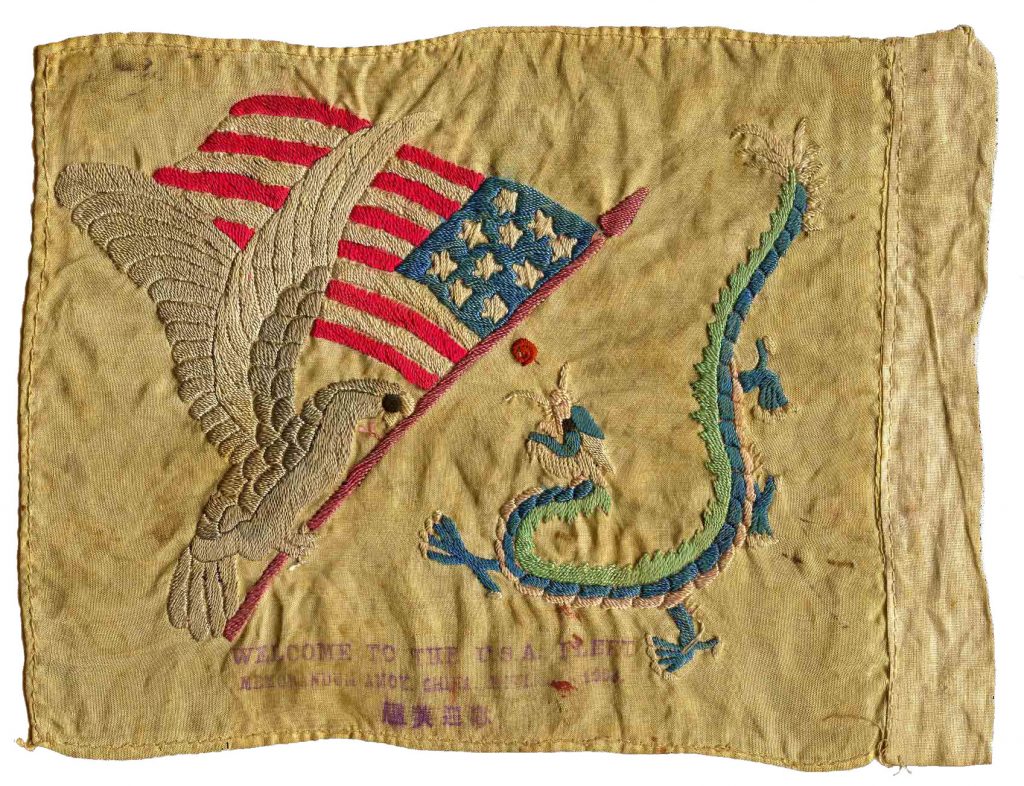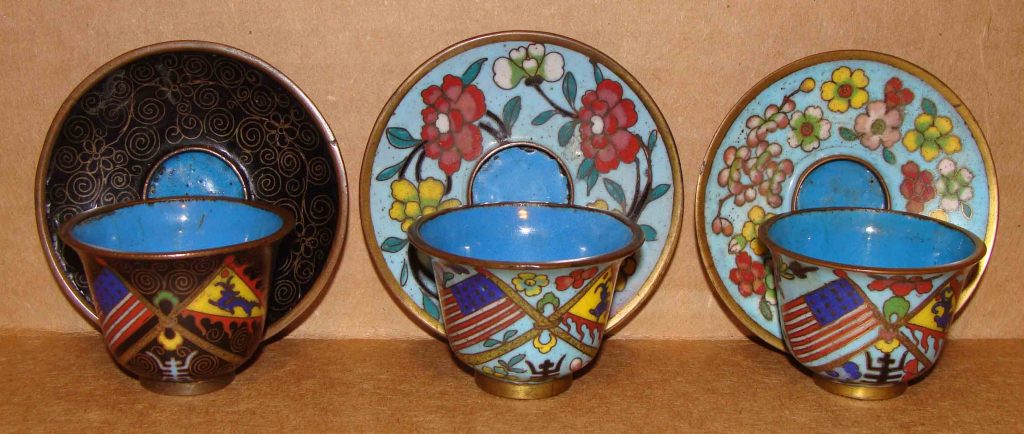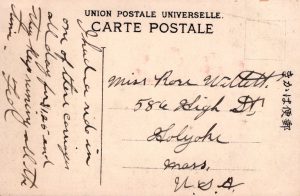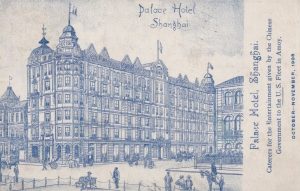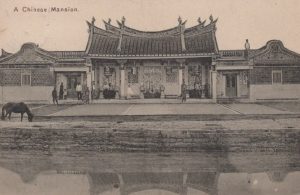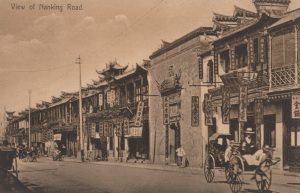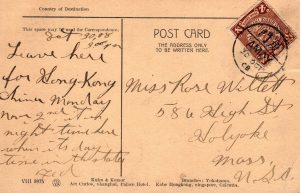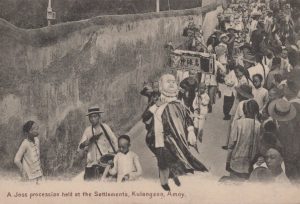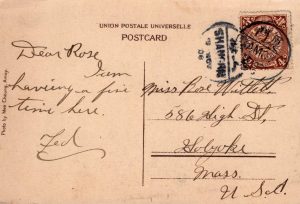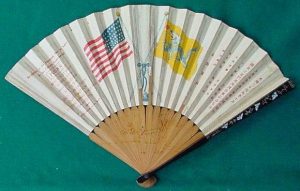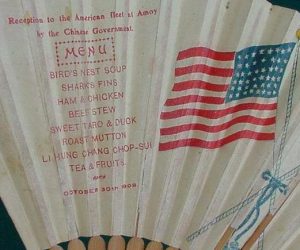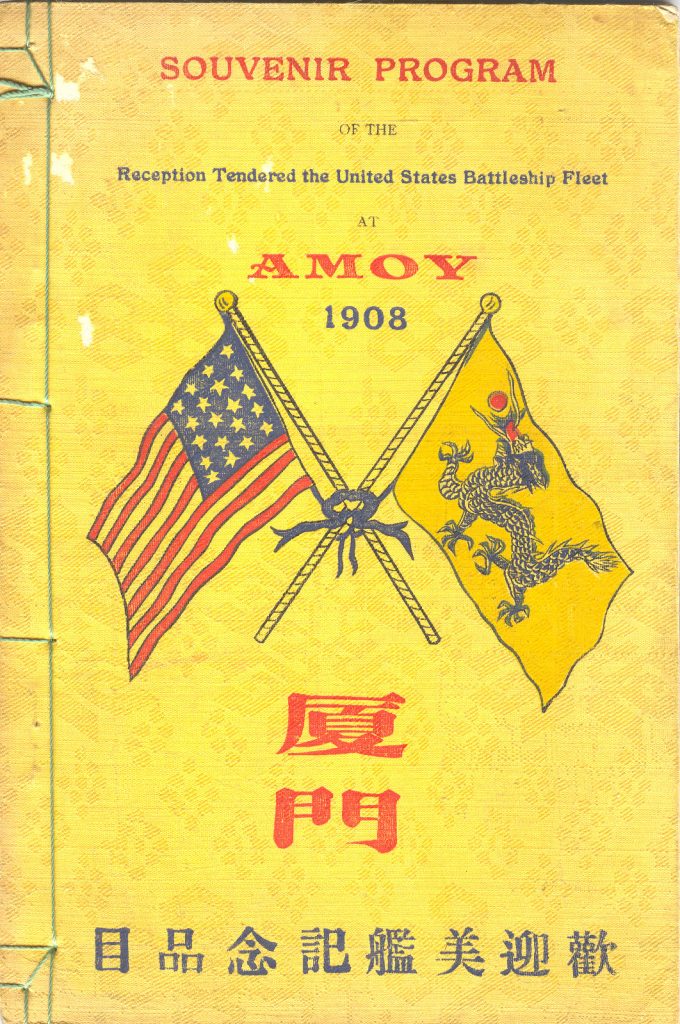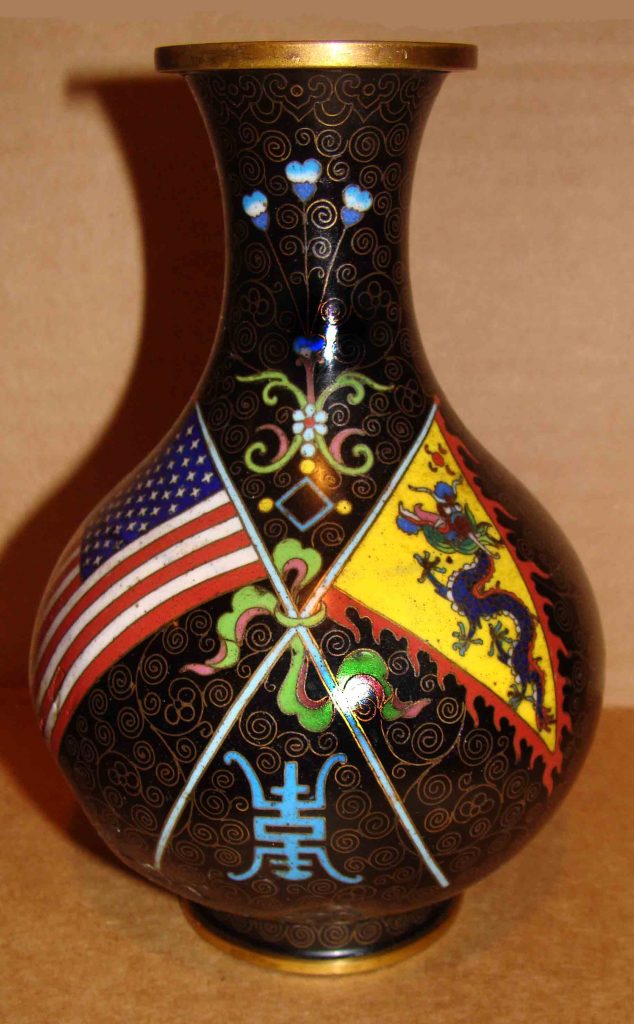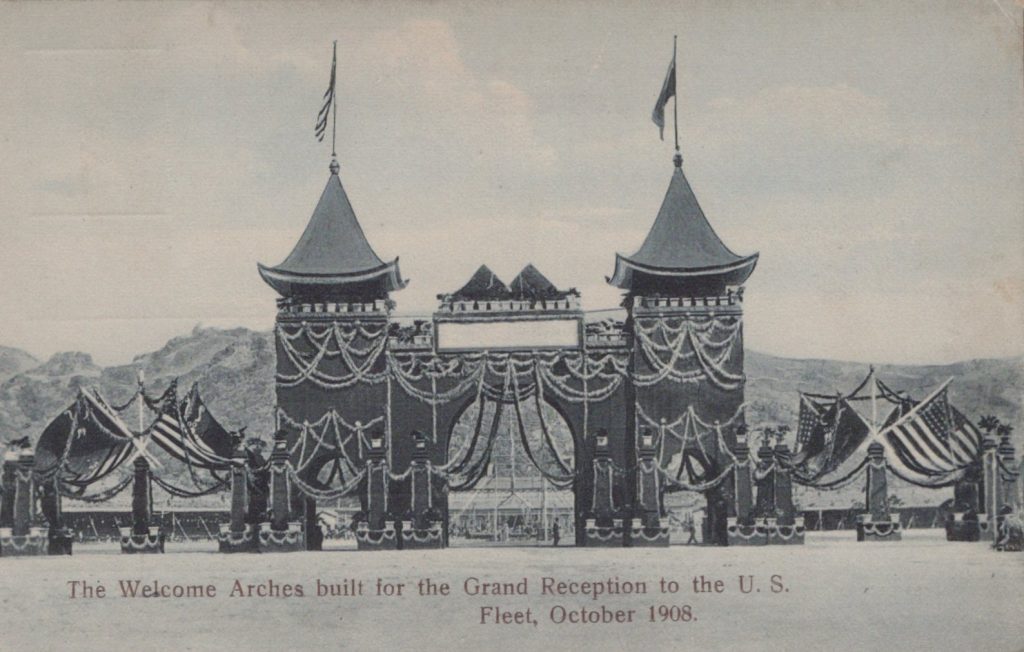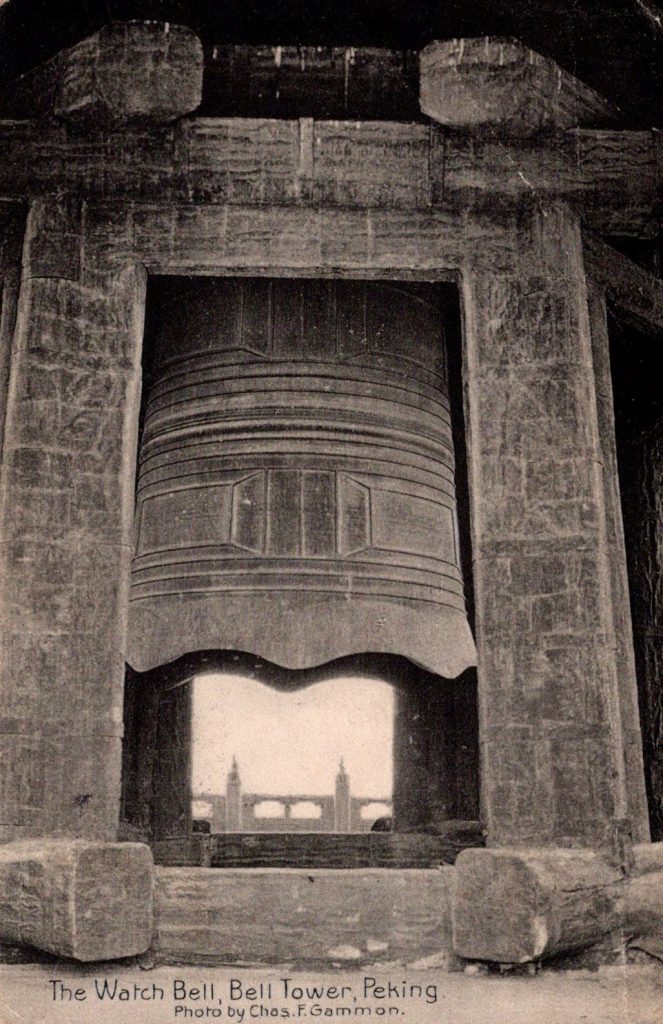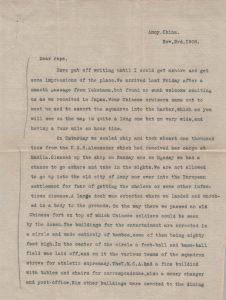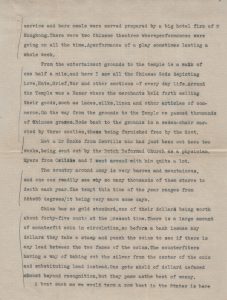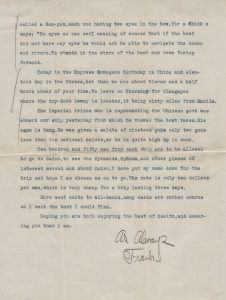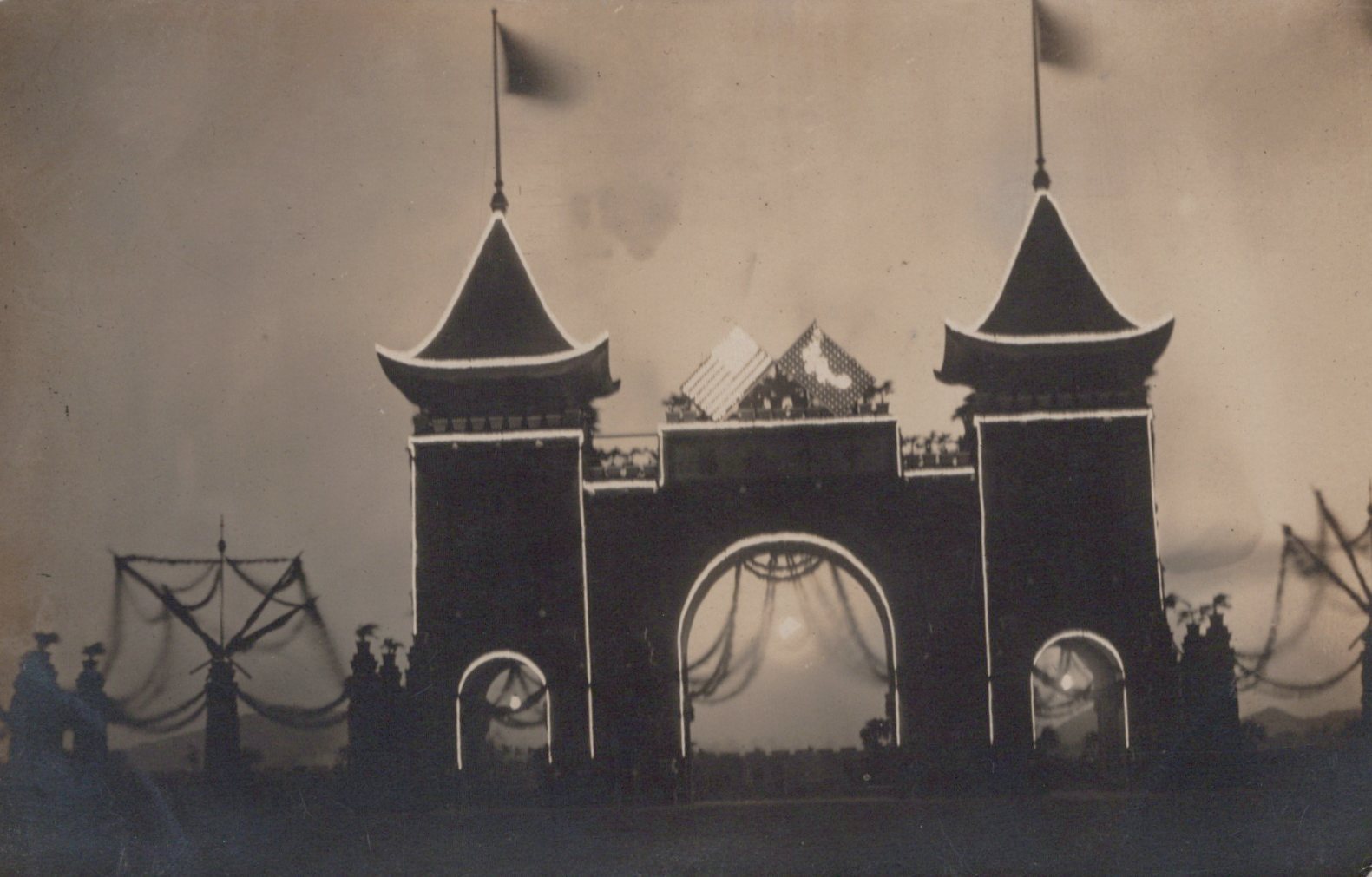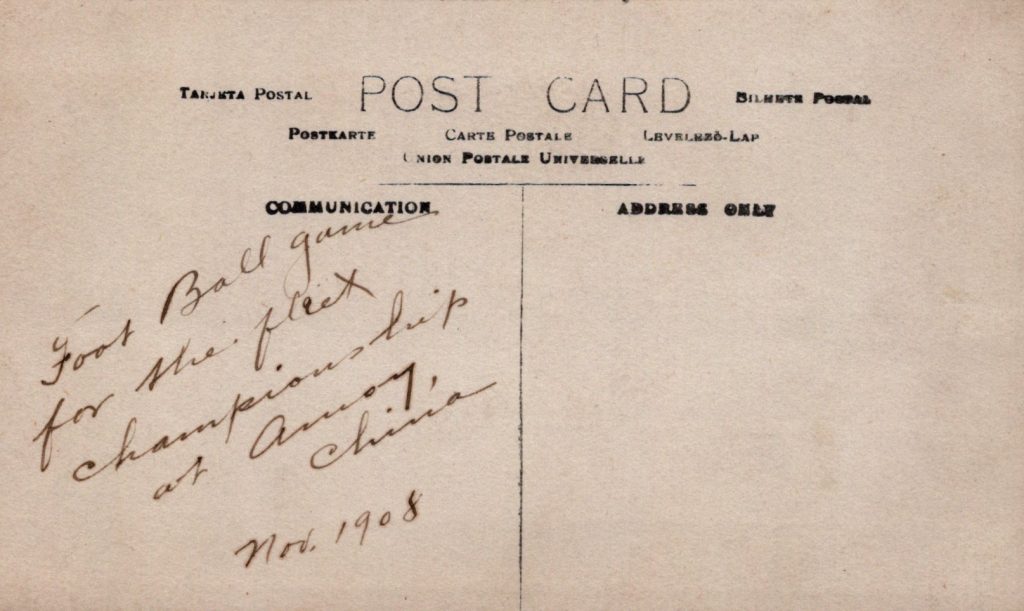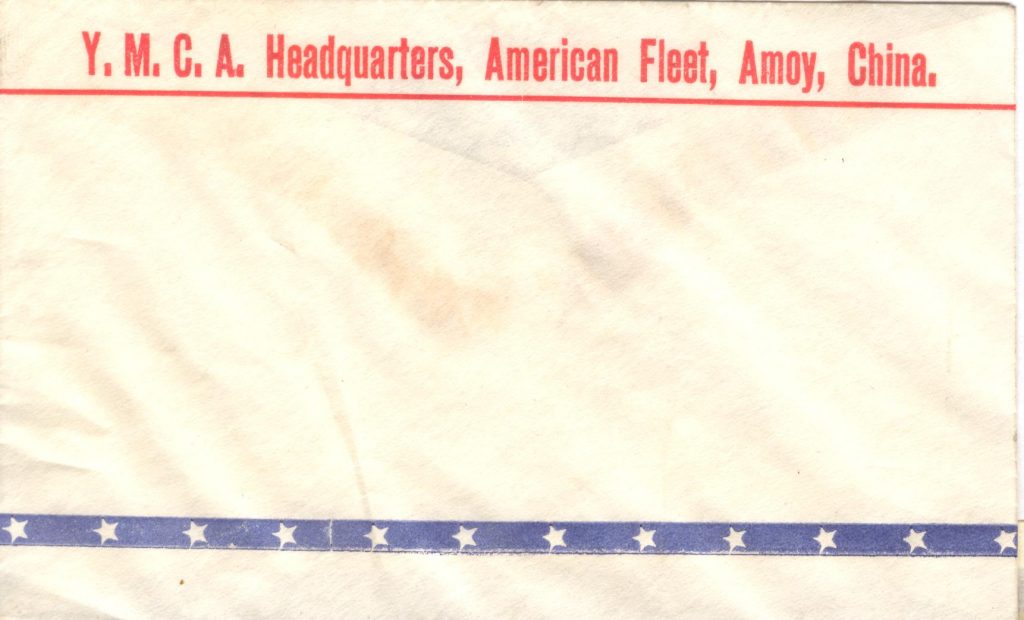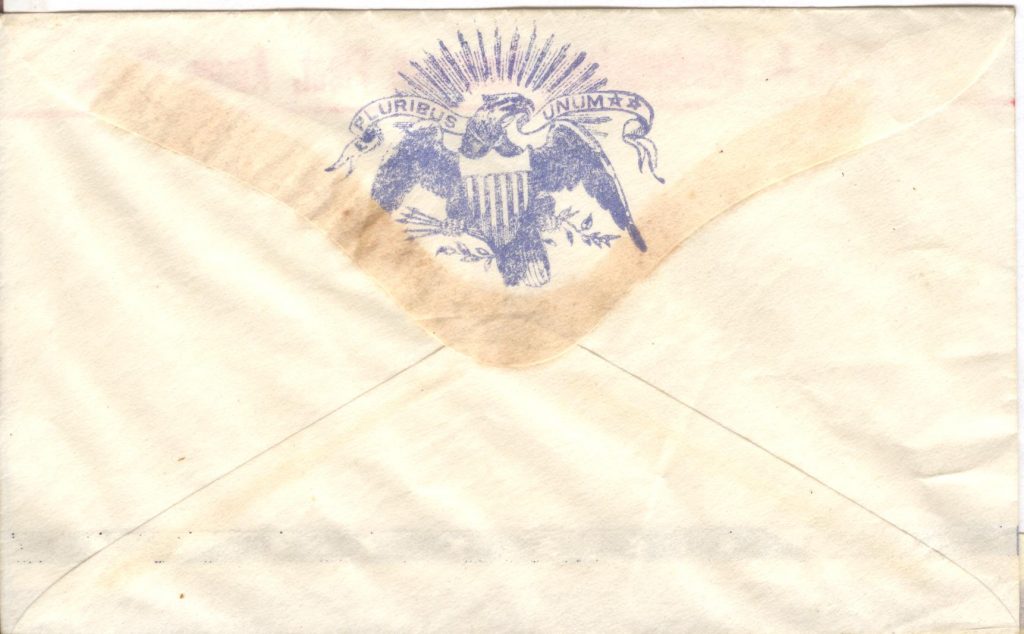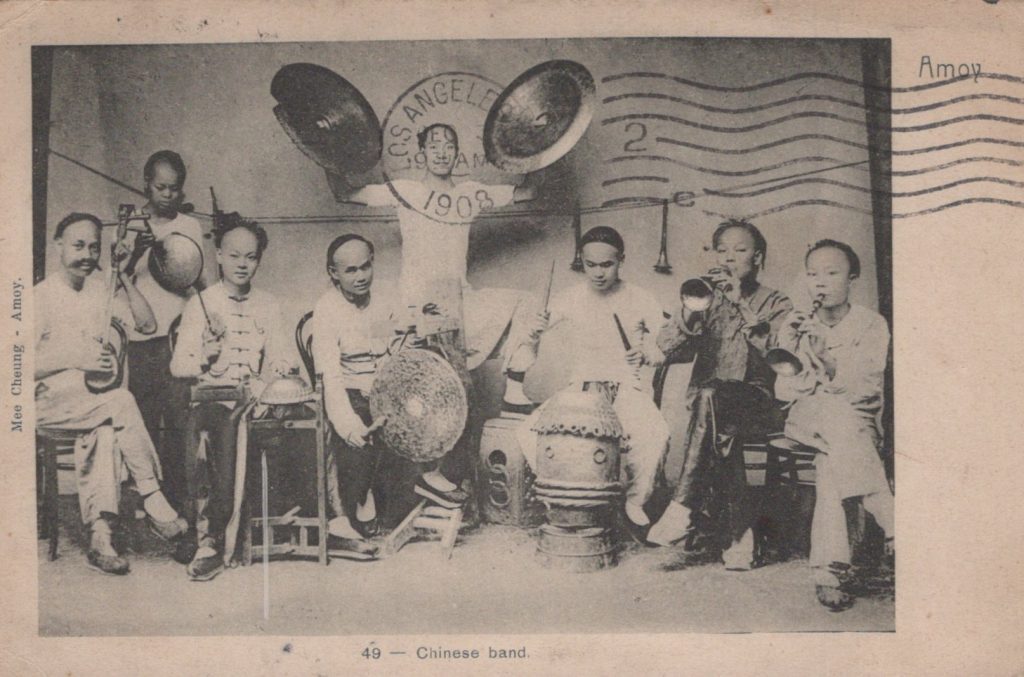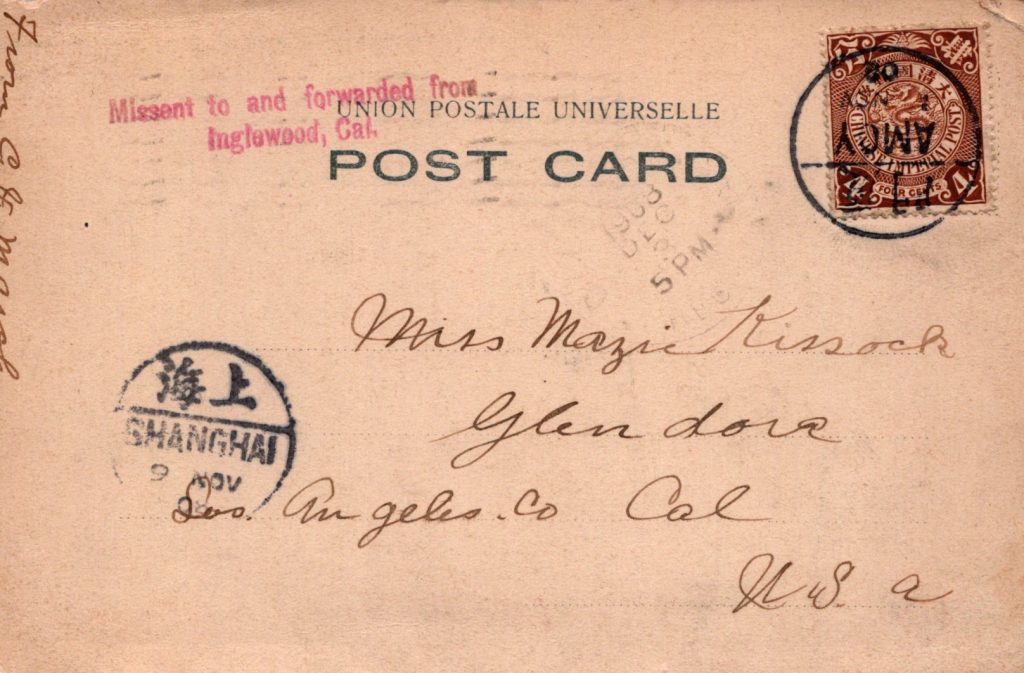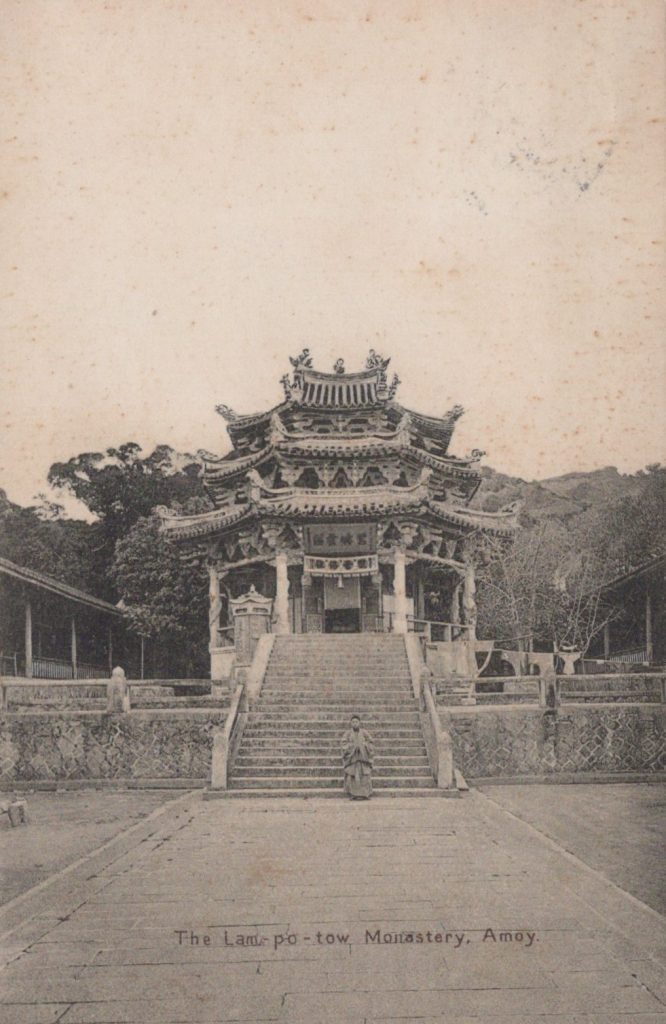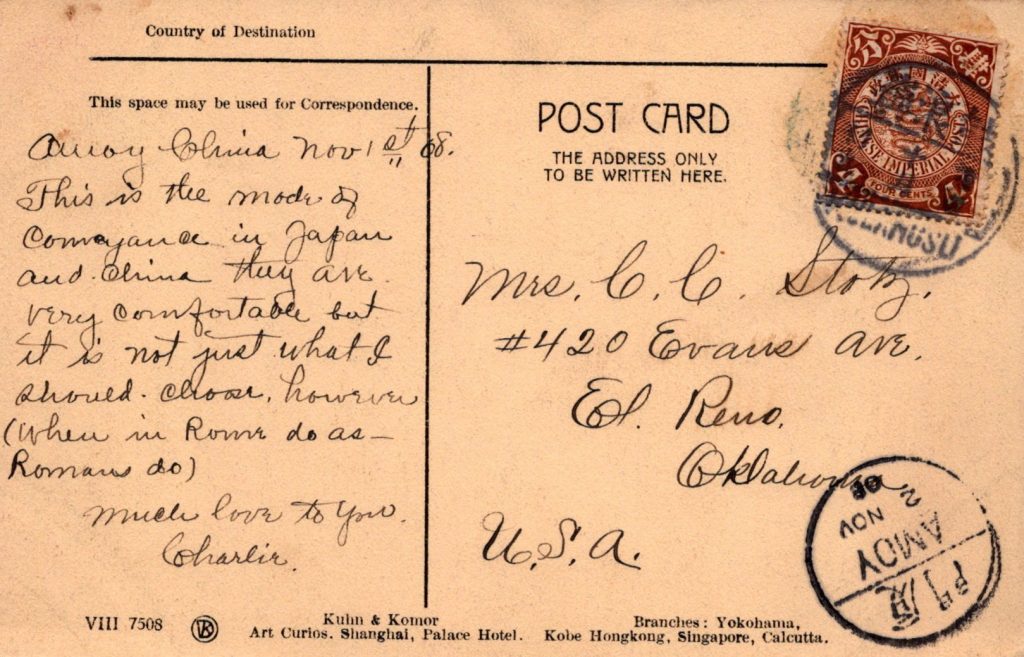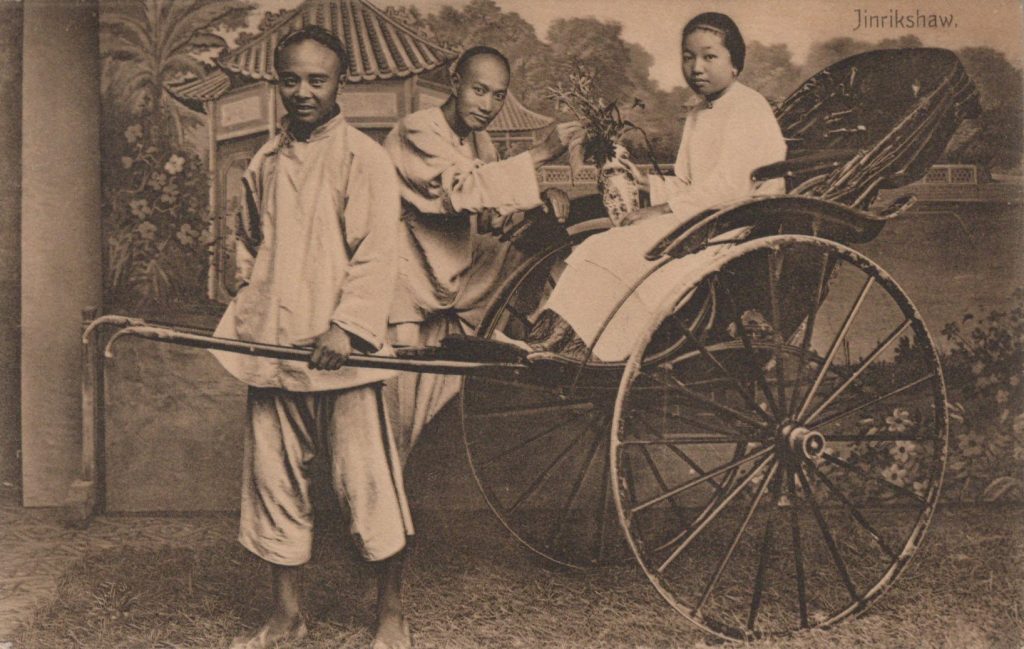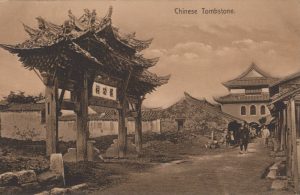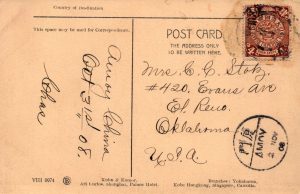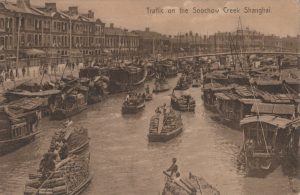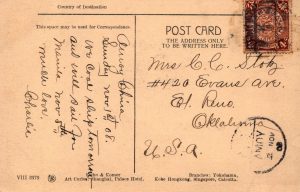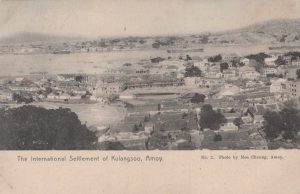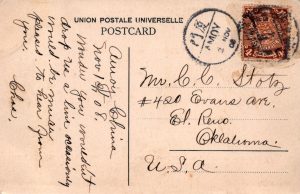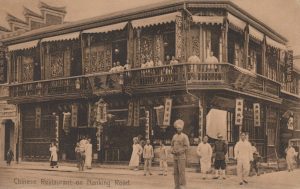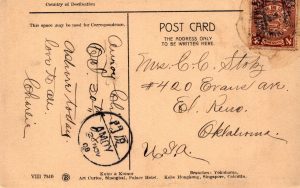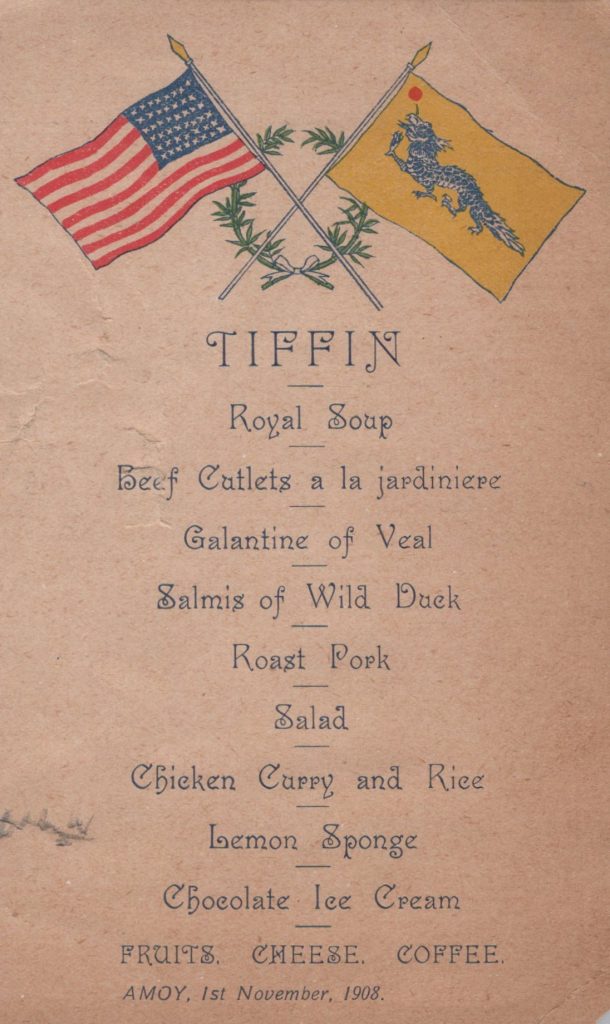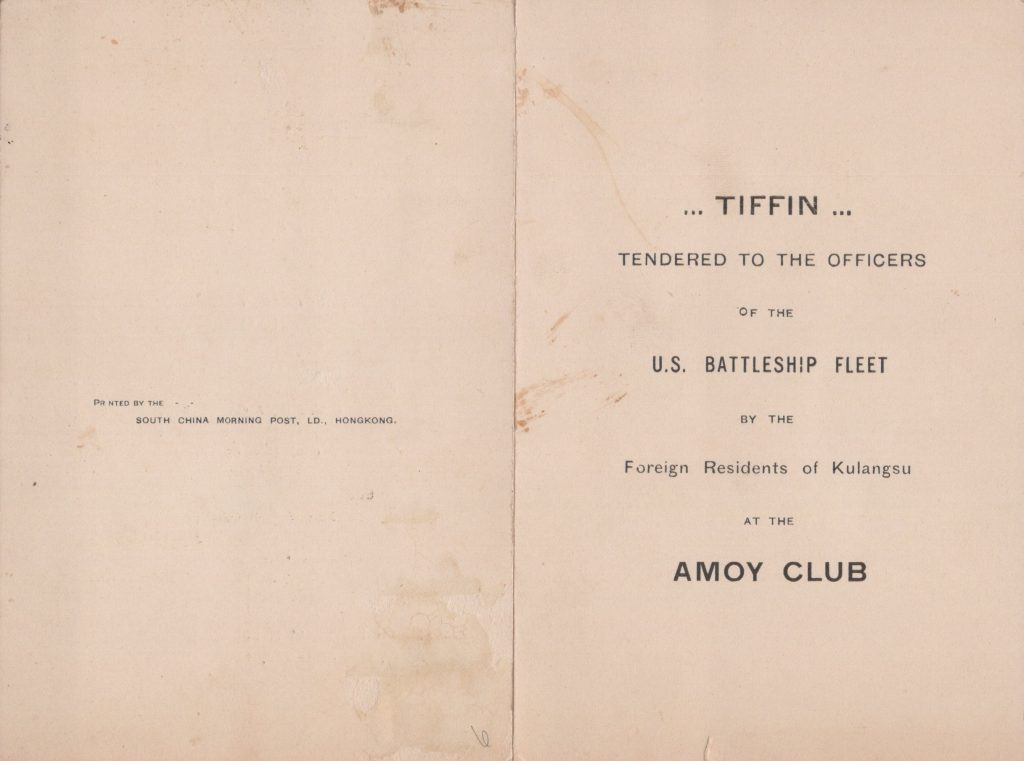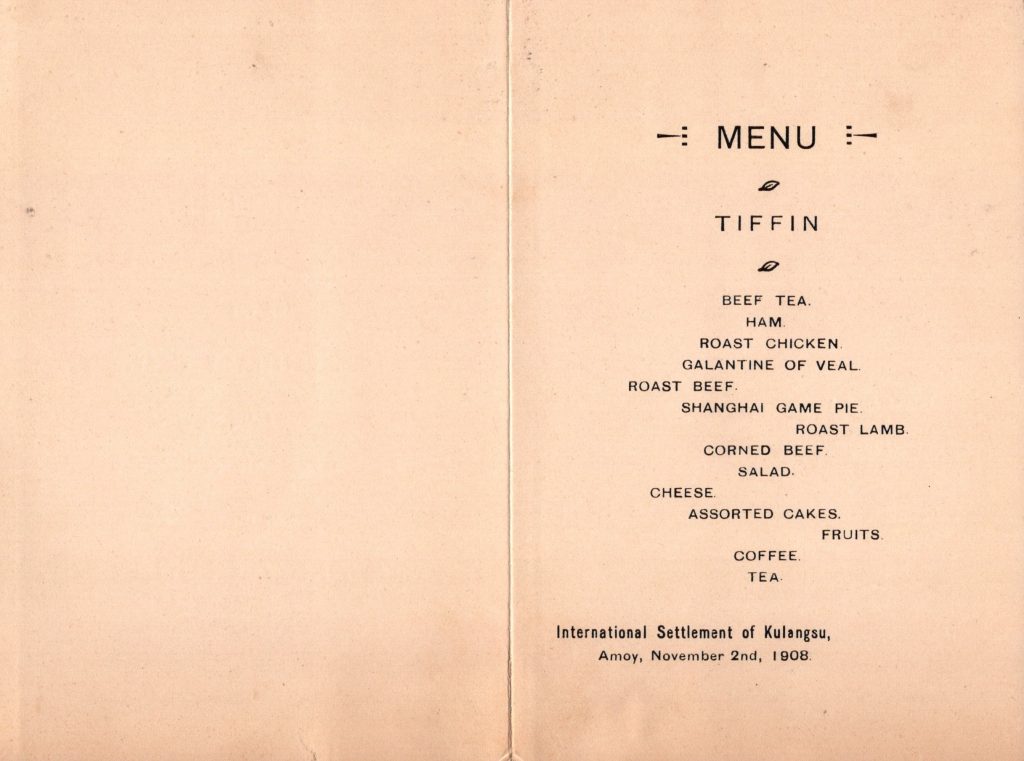Apologies, but no results were found for the requested archive. Perhaps searching will help find a related post.
At the time of the American Fleet's visit, our recognition of Japan vs. China as a regional power was an issue the Roosevelt needed to address. Initially Shanghai was selected as the port of call, but after arches and pavilions had been constructed, the Navy Department decided, under political pressure, the port was too shallow and the channels to difficult. The Chinese were pleased with the alternate selection of Chefu which was close enough to the Empress in Peking to call Admiral Sperry to visit. After again building grand stands, arches and pavilions it was rejected by Washington because it faced the Japanese fortress at Port Arthur. Washington felt it would offend the Japanese by honoring a enemy of Japan, the Chinese, who were then occupying parts of Manchuria. Sending half of the fleet to Port of Amoy and the other to Manila was the solution.
The Pacific and South China Sea
The small cup and saucer at right, with the American and Chinese flags made out of the art of cloisonne was one of the many souvenirs of this visit.
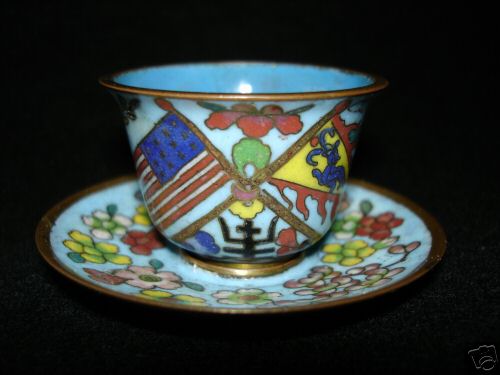
The Second Squadron, 3rd and 4th Divisions, led by Rear Admiral Emory and Schroeder took their ships to Amoy. These included from the Third Division, Louisiana, Virginia, Missouri and Ohio, and from the 4th Division, Wisconsin Illinois, Kearsarge, and Kentucky.
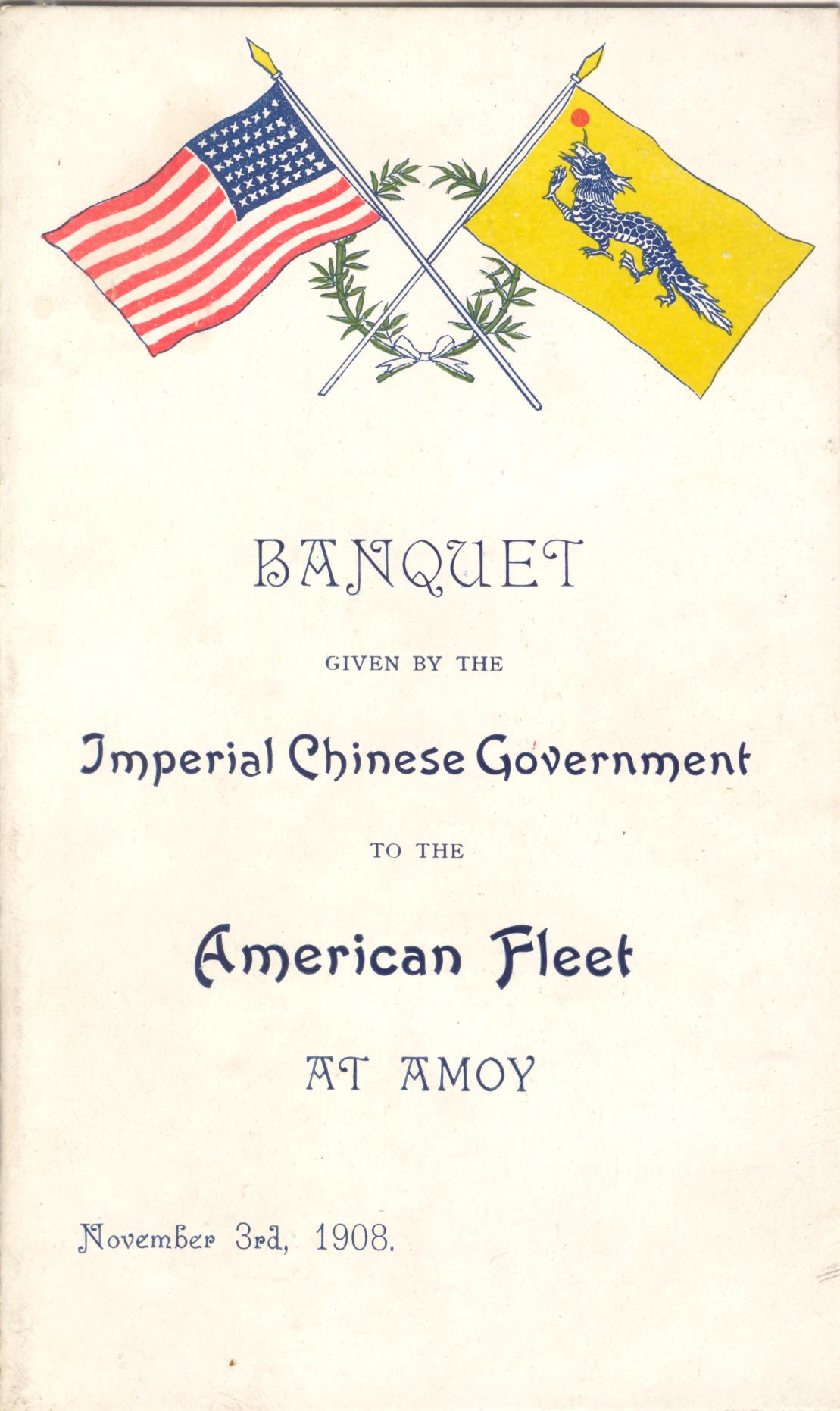

The Official Banquet was held within the pavilion and was conducted as a traditional "American Style" service and menu, veal, beef, asparagus, mutton, roast turkey, Cumberland ham, plum pudding, and vanilla ice cream. Sherry, champagne, port, and liqueurs. This banquet was held on November 3rd.
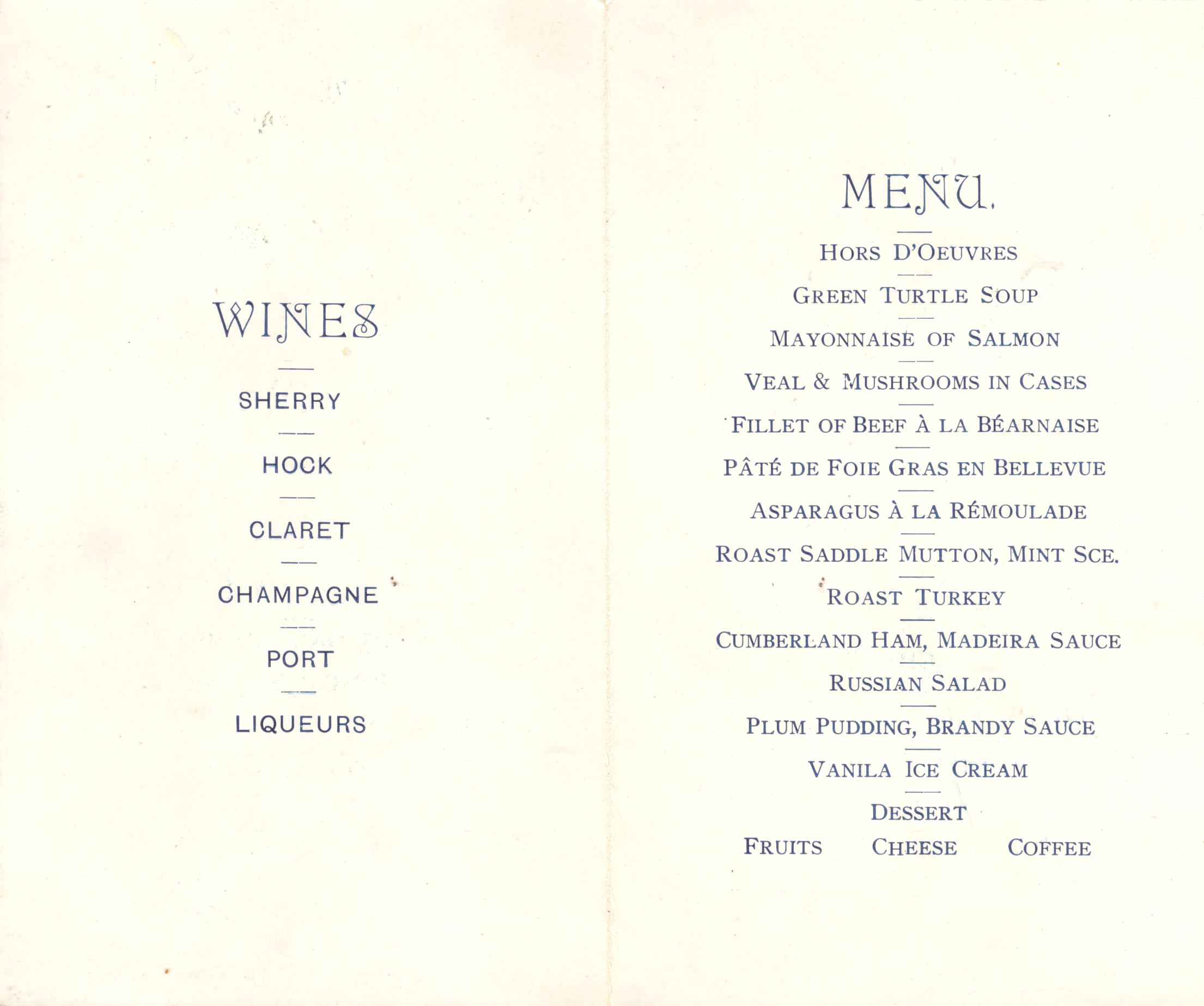
visit of second squadron to amoy china 1908 cruise around the world
This panoramic view of the harbor at Amoy shows Second Squadron at anchor with the Chinese fleet units. On the right side is the entry gate constructed for the Fleet's visit and the path leading up to the walled pavilion. This photograph is original, approximately 6-1/4" x 13", and was probably available to sailors for purchase. Fleet units are labeled from left to right: USS Ohio, USS Wisconsin, USS Missouri, USS Kentucky, USS Rhode Island, USS Kearsarge, USS Minnesota (Squadron Flag Ship) USS Illinois. The Fei-Ying and the Hai-Chai can be seen on the right side behind the American ships. An Ebay find, under an obscure listing, I held my breath all week without bidding. (In the early Ebay days you could track each other for what you were bidding on and what you had purchased. It was common for people to look at everything that you were bidding on as part of their search.)
These three photographs are believed to be from a professional photographer that was on the Illinois throughout the cruise. These are 4" x 6" prints that show a group of sailors enjoying a beer at one of the tents, the main Officer Pavilion building, and a tug-of-war contest in the main area of the compound. These rare and unique photographs of this port visit were taken by Seaman Nyberg of the USS Illinois. To see more of his photography follow this link.
jugglery entertainment to the american squadron at amoy
This card was issued long after the departure of the Squadron of ships that visited Amoy and was published by the Yee Wo Shing, Dealer in Postcards, Stamps and Novels, 7 Canton Road, Kowloon. It is unusual in the respect that it was published in China and probably sold to American sailors visiting Hong Kong.
caterers for the fleet
This is an interesting card, Palace Hotel, Shanghai. Caterers for the U.S. Fleet in Amoy, October - November, 1908. The compound that was erected at Amoy was not popular with the local people who wanted no part of the welcoming of the Americans. The local people felt that the Japanese might hold this against them in the future a choose not to support the construction or services to the compound. This card is from the Palace Hotel which catered food for the fleet's visit. And because it was in this sailors collection in must have been given out in Amoy. It is the first one that I have seen.
The history of the hotel - now the Peace Hotel - is interesting. The site dates back to the 1850s when the first hotel, Central Hotel, was built. In 1903, the building was restructured and renamed the Palace Hotel. In 1926 a second building, the North Building was constructed as the Cathay Hotel. After the Communist takeover in 1949, both buildings were operated by the municipal government and was used by the Gang of Four. In 1956 it once again became a hotel under the name "Peace Hotel" and today the north building is called Sassoon House and the south, The Swatch Art Peace Hotel.
On October 30th, Second squadron was met at sea by the Chinese torpedo gunboat Fei-Ying; anchored in Amoy harbor, and was greeted by the Chinese flagship Hai-Chai. Admiral Emory had dinner with Prince You Lang at the reception hall with select officers of the fleet. The reception hall, as well as the entire facility where the fleet would be greeted had been specially constructed for the visit. All of the food and drink was brought in from Shanghai along with rickshaws, mandarin chairs, horses and wagons. It was at Amoy that many of the sailors were introduced to the oriental delicacy of shark fin soup.
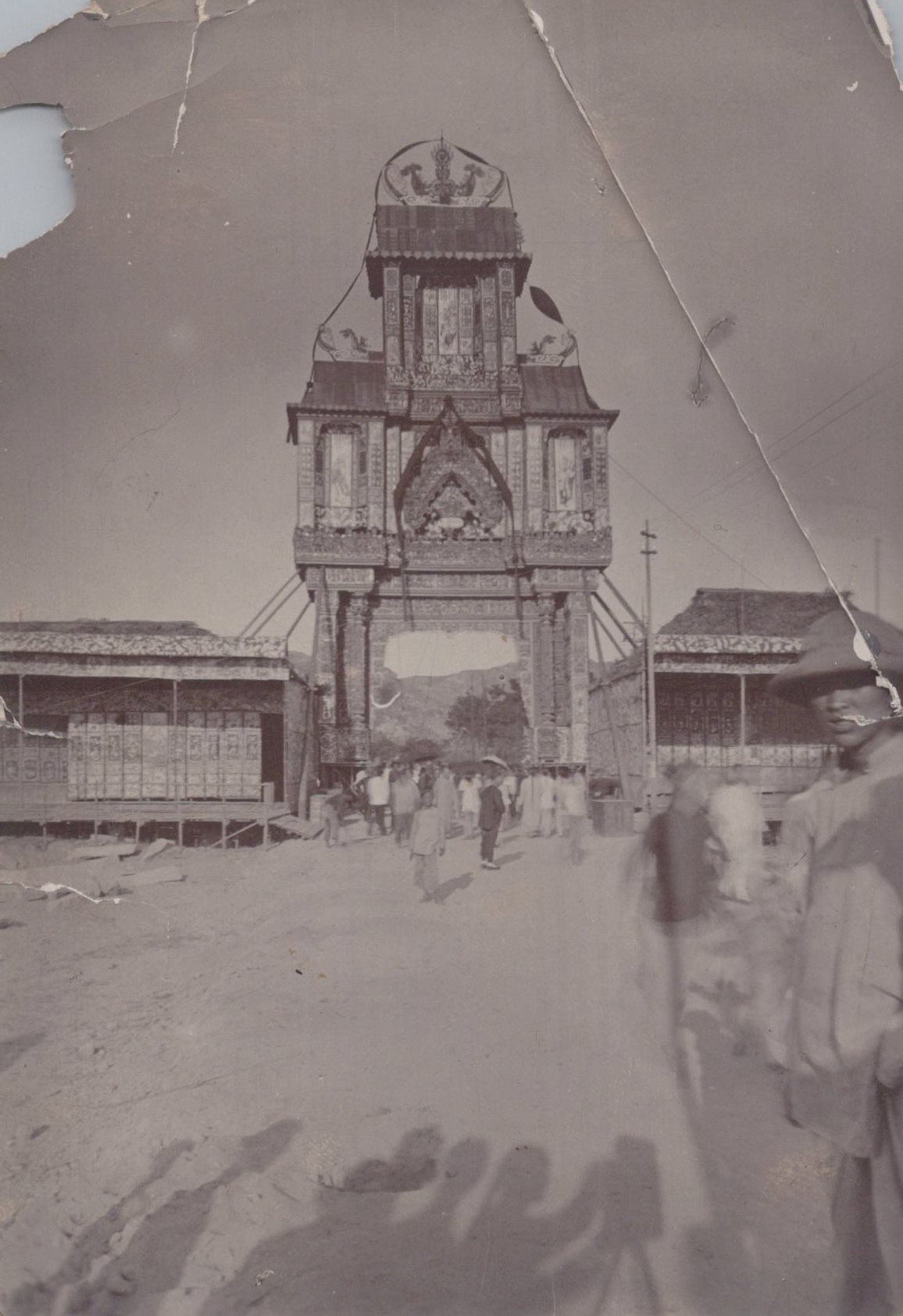
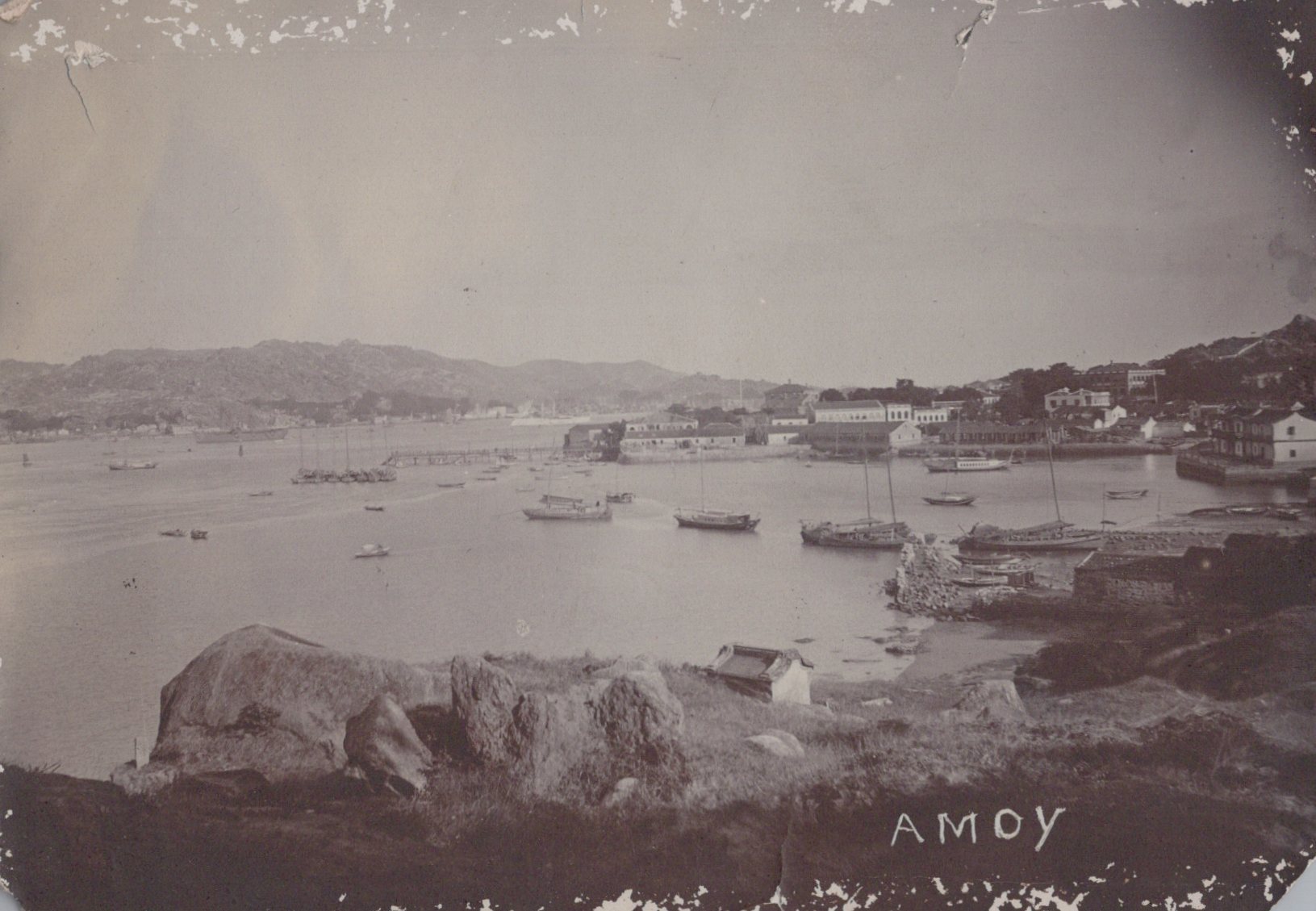
From the letters of Frank Lesher, "Have put off writing until I could get ashore and get some impressions of the place. We arrived last Friday after a smooth passage from Yokohama, but found no such welcome awaiting us as we received in Japan. Four Chinese cruisers came out to meet us and to escort the squadron into the harbor, which as will see on the map is quite as long one but not very wide, and having a four mile an hour tide.
On Saturday we coaled ship and took aboard one thousand tons from the USS Alexander which had received her cargo at Manila. Cleaned up the ship on Sunday and on Monday we had a chance to go ashore and take in the sights. We are not allowed to go up into the old city of Amoy nor over into the European settlement for fear of getting the cholera or some other infectious disease. A large dock was erected where we landed and marched in a body to the grounds. On the way there we passed an old Chinese fort on top of which Chinese soldiers could be seen by the dozen. The buildings for the entertainment are erected in a circle and made entirely of bamboo, some of them being eighty feet high. In the center of the circle a football and baseball field was laid off, and on it the various teams of the squadron strove for athletic supremacy. The YMCA had a fine building with tables and chairs for correspondence, also a money changer and post office. (worth reading the letter below)
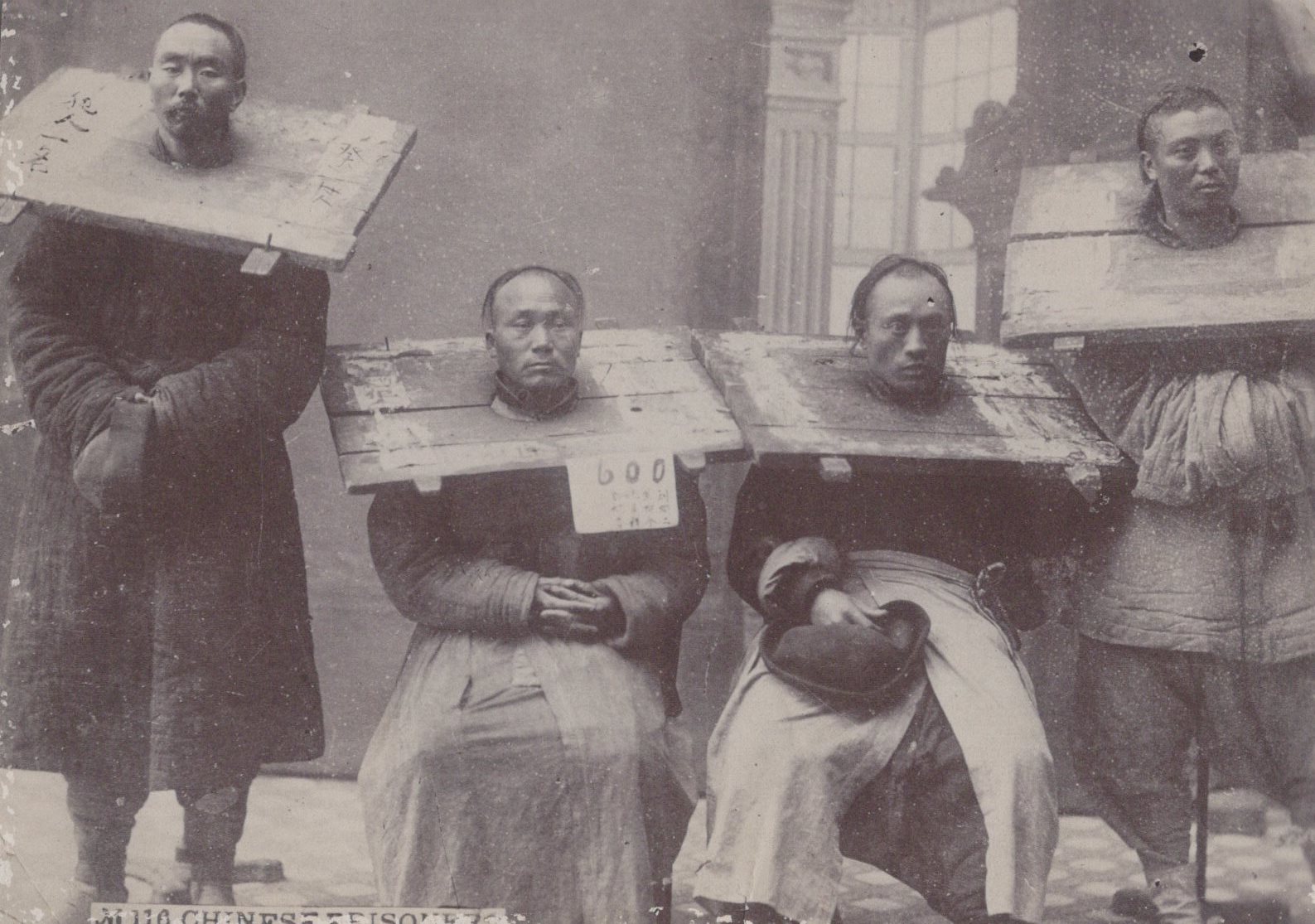
To greet the American Fleet in Amoy it became necessary to build a "second city" from an existing town outside Amoy. "Pleasure City", as it was called, was constructed against all odds. The city of Amoy provided no support for purchasing construction materials, labor, or food for the sailors. Everything had to be brought in by junk or wagon from northern cities. Further they had to construct the city as a fortress with police and regular troops to provide armed emplacements around the walls. This was completed at a cost of over $7000,000.00 and then rebuilt after the city was destroyed by a typhoon on October 12th and 13th. Nonetheless, the city was ready when the fleet arrived.
The Pleasure City might be compared to a Hollywood set of the old west with walls around it to protect it. Everything had been quickly constructed with no intent for future use. Entertainers of all types were brought to the Pleasure City, bands, jugglers, demonstrations of martial arts and dance troops. On the final day, November 4th, there was a fireworks demonstration, the largest in Chinese history, for entertainment to the sailors. Unfortunately, the city caught fire and burned down, including the YMCA building and outgoing mail that had not been sent. It is reported that the fire burned 10,000 postcards. The Chinese accused sailors of looting the buildings and Admiral Emory brought crews back aboard ships and departed the harbor at dawn the next day.
Much of my collection from Amoy relies on the individuals that sent cards home and were saved in large groups from the entire cruise. These collections show sailors buying cards about China culture and scenes from the surrounding communities. The cards below are from the collection of Charles Stotz, a chief electrician of the USS Illinois.
Tiffin is an Indian English word for a type of meal. It can refer to the midday luncheon or, in some regions of the Indian subcontinent, a between meal snack, or in South Indian usage, a light breakfast. When used in place of the word "lunch", it does not necessarily mean a light meal. Select officers were invited to a couple of "tiffins", one by the foreign residents of Kulangsu at the Amoy Club on November 2nd, and one on November 1st, possibly at the pavilion at the Pleasure City. These events were probably arranged by the local British population.

